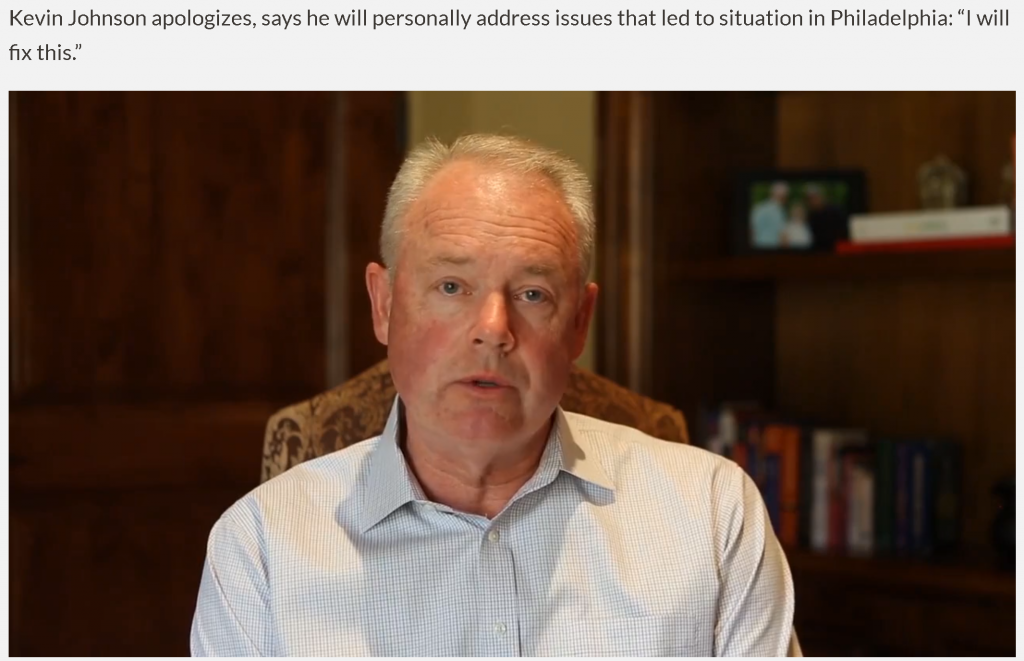Search
Bookmark This: Starbucks and a lesson on leadership and accountability

Screenshot taken from https://news.starbucks.com/views/a-follow-up-message-from-starbucks-ceo-in-philadelphia
Starbucks was riding a pretty good HR streak in 2018. Among other things, the coffee giant had attained 100% gender and racial equality and announced investments in paid leave. Yep, things were lookin’ really good for Starbucks.
Then, last week, things got really bad.
An arrest sparks a protest of racism.
Last Thursday, two black men were arrested at a Philadelphia store location. NBCNews.com reports (here) that the men were taken into police custody “after a Starbucks manager called 911 because they were sitting inside the store, had not bought anything and refused to leave, according to police.”
The arrests engendered protests and accusations of racism against Starbucks.
Yep, for Starbucks, last week was one to forget.
Leadership and Accountability.
Things could have gone from bad to worse for one of the most admired companies worldwide.
Except, Starbucks CEO Kevin Johnson stepped in with a masterclass on leadership and accountability.
It’s almost as if he took a page directly out of the U.S. Equal Employment Opportunity Commission playbook.
You see, a few years ago, the EEOC formed a Select Task Force on the Study of Harassment in the Workplace. The mission of the Task Force was to “[e]xamine the problem of harassment in the workplace in all its forms and seek[] to identify new and creative ways by which it might be prevented and eliminated.”
Among its key findings, the Task Force knew where the buck must stop and real change must start:
It Starts at the Top – Leadership and Accountability Are Critical. Workplace culture has the greatest impact on allowing harassment to flourish, or conversely, in preventing harassment. The importance of leadership cannot be overstated – effective harassment prevention efforts, and workplace culture in which harassment is not tolerated, must start with and involve the highest level of management of the company.
Mr. Johnson displayed these hallmarks in a letter to Starbucks Customers and Partners and a follow-up video message.
All told, Starbucks and Mr. Johnson checked three important boxes. First, Mr. Johnson apologized. He apologized a lot — to the two men arrested, to the City of Philadelphia, and to the customers of Starbucks. (Multiple reports indicate that the two men will meet with Mr. Johnson to address the incident.) Second, Mr. Johnson didn’t sugarcoat what happened. He called out Thursday’s event as an example of unconscious bias — racism. Third, Mr. Johnson/Starbucks promised that the company would learn from this incident, take specific action, and improve, including a mandate that store managers would undergo specific training for how to spot “unconscious bias.”
Takeaways for employers.
Obviously, a widespread, prolonged customer protest of Starbucks could have (and may still) negatively impact Starbucks’ bottom line. Customers are paying attention. Shareholders are paying attention.
But, do you know who else is paying close attention here?
Starbucks employees.
Hopefully, you never find yourself in a situation of this magnitude and publicity. But, even on a micro-level, your employees will notice how you respond to a complaint of discrimination.
When that happens, will you lead by example? Will you be accountable?
 The Employer Handbook Blog
The Employer Handbook Blog


